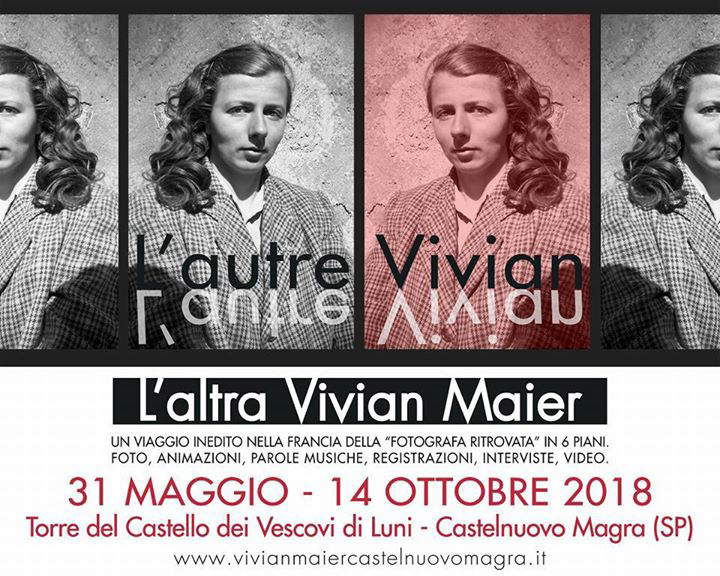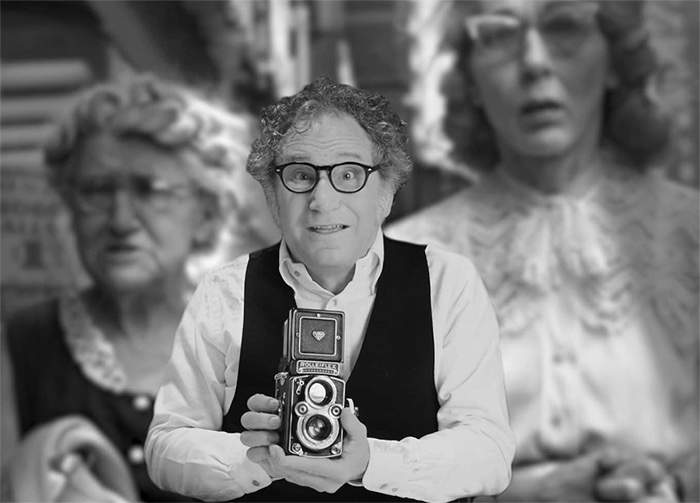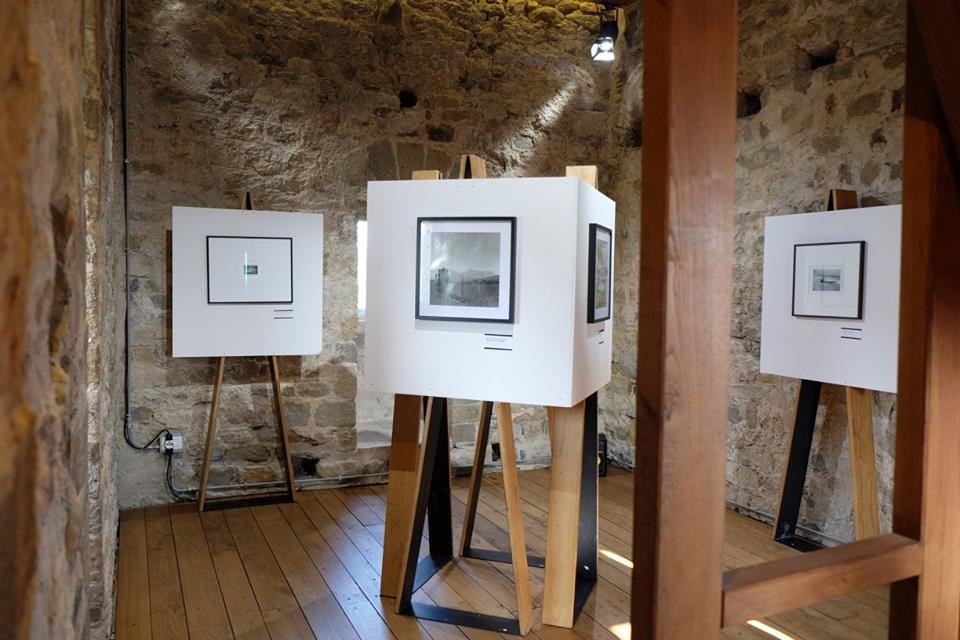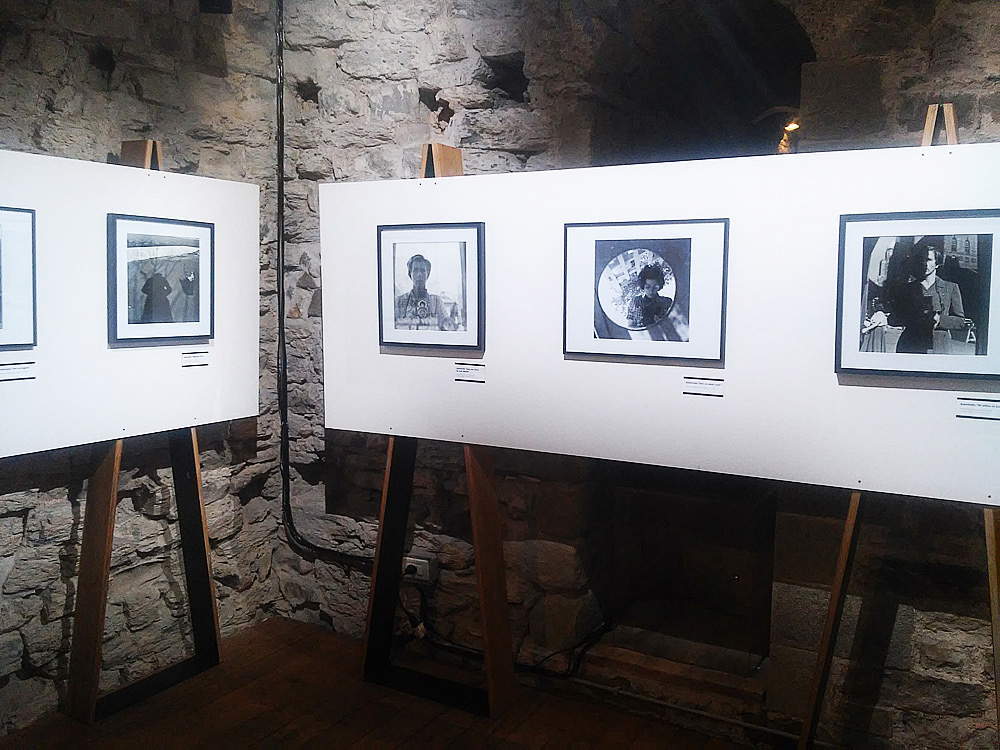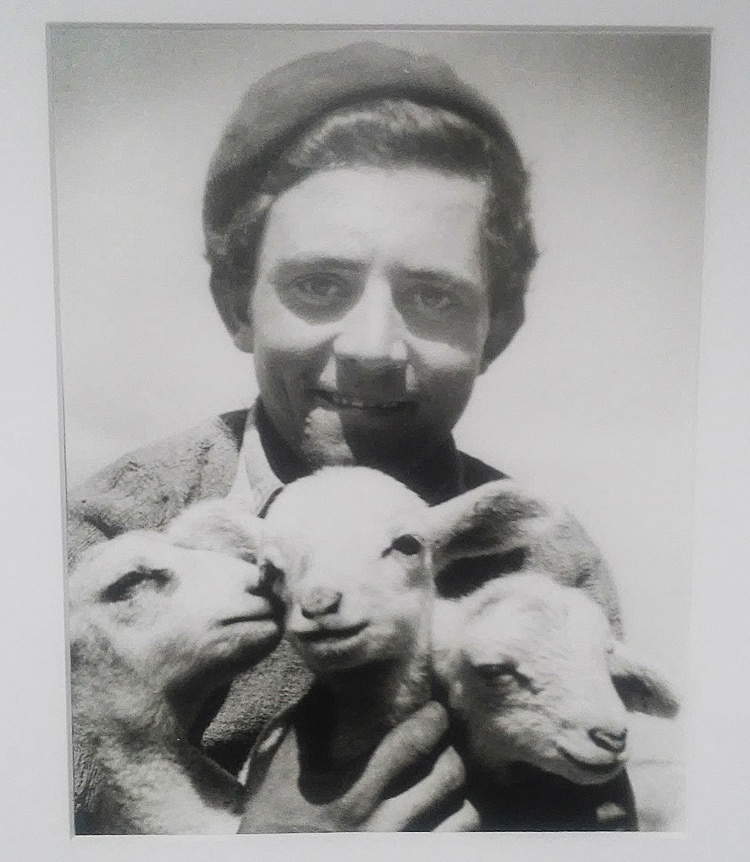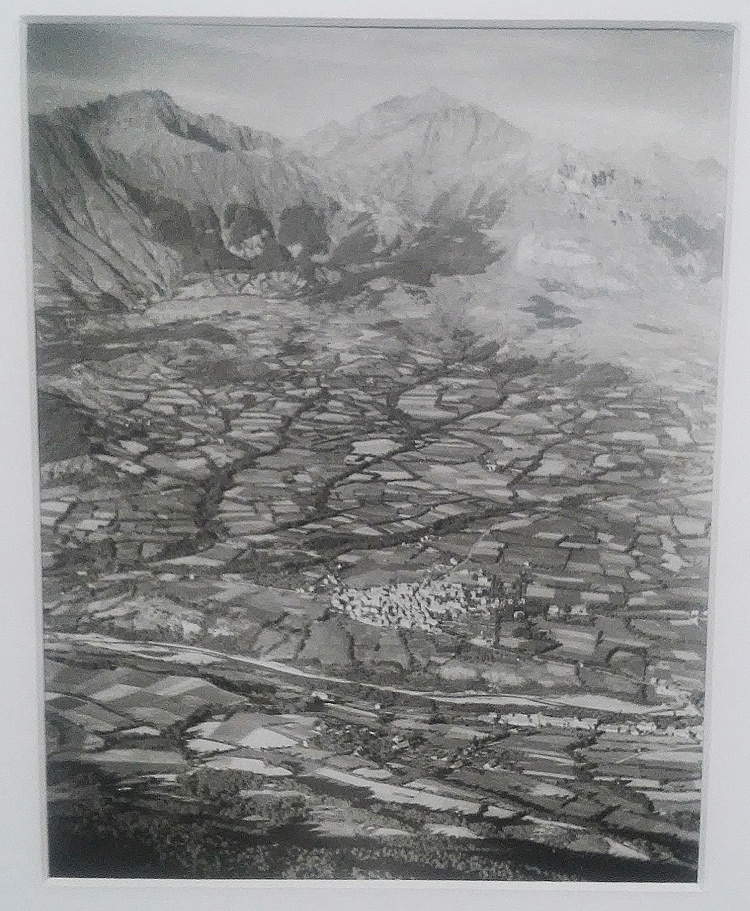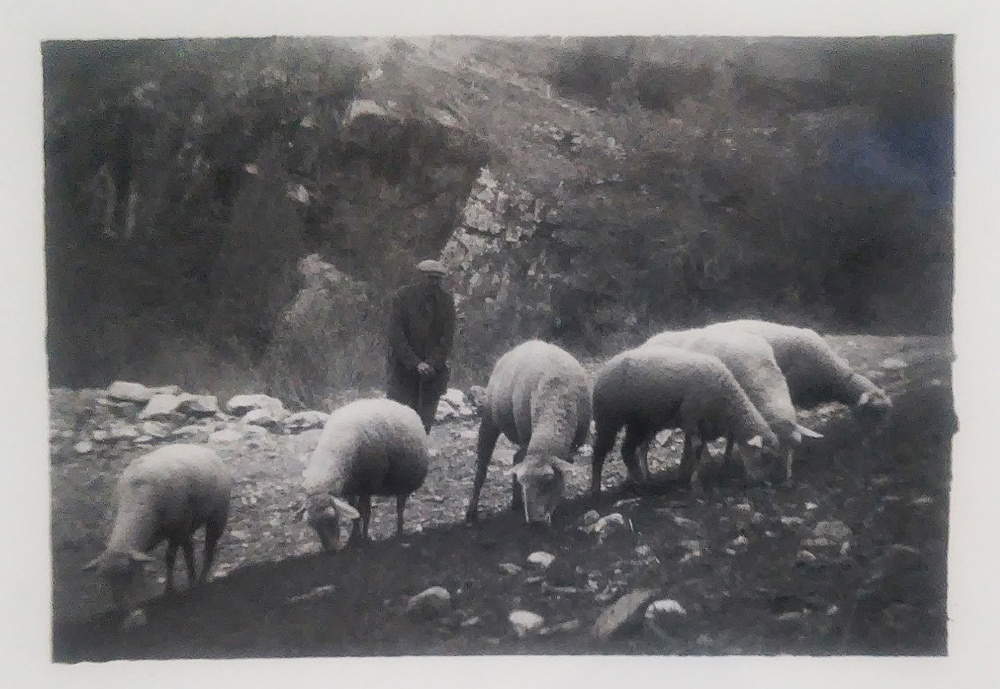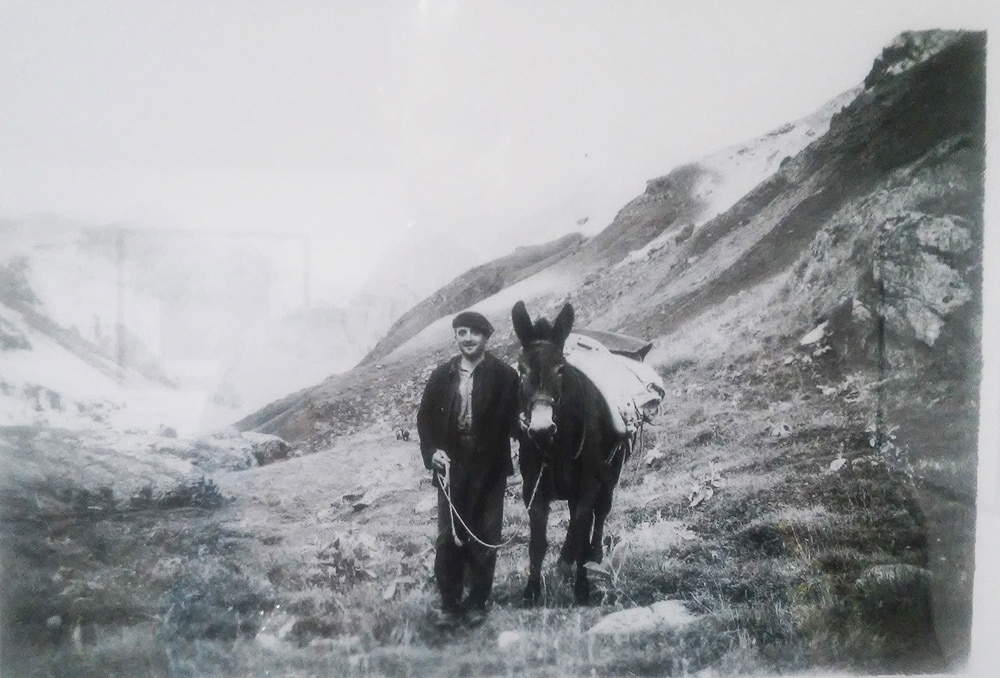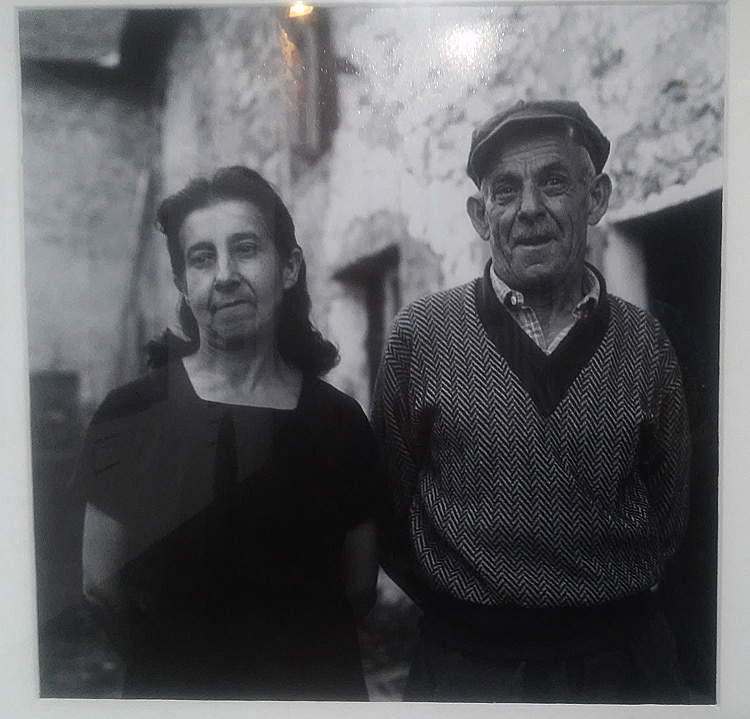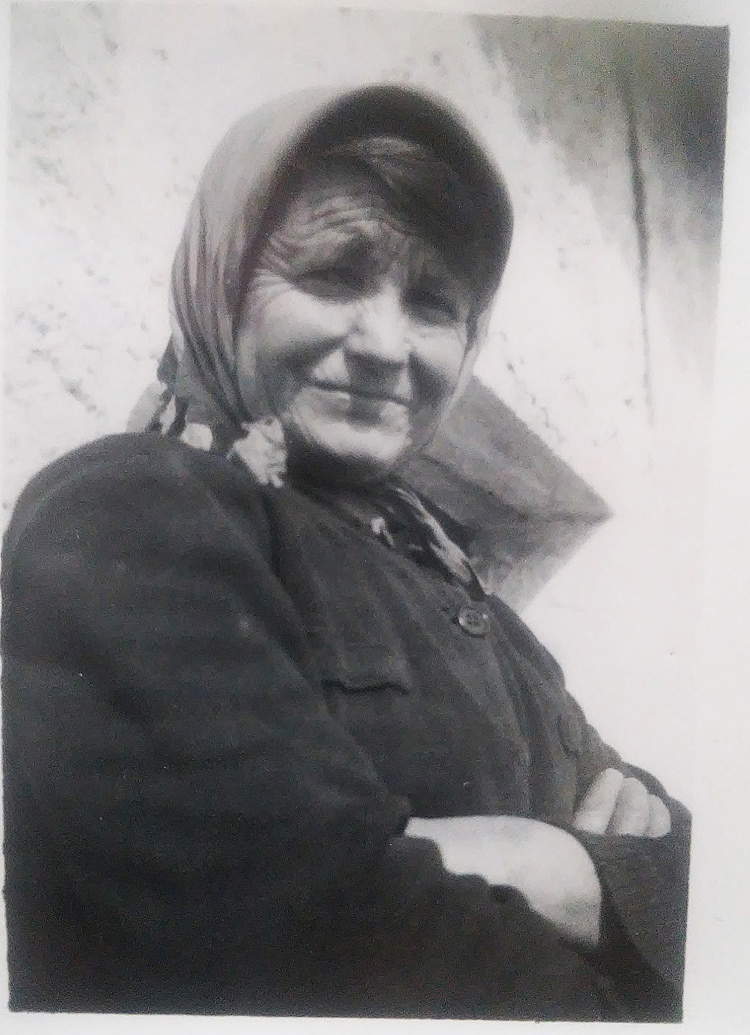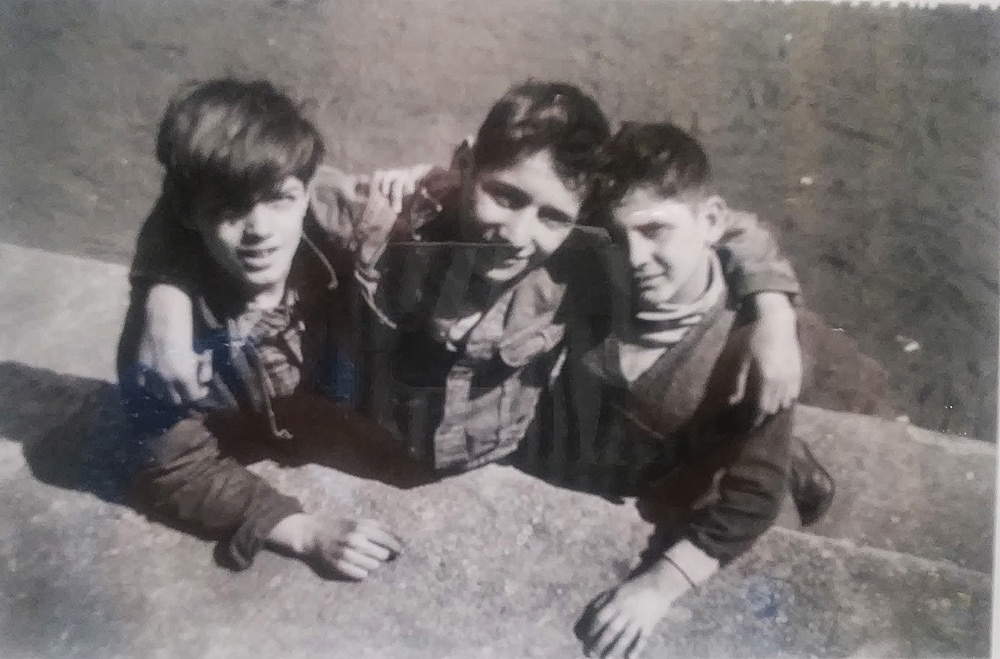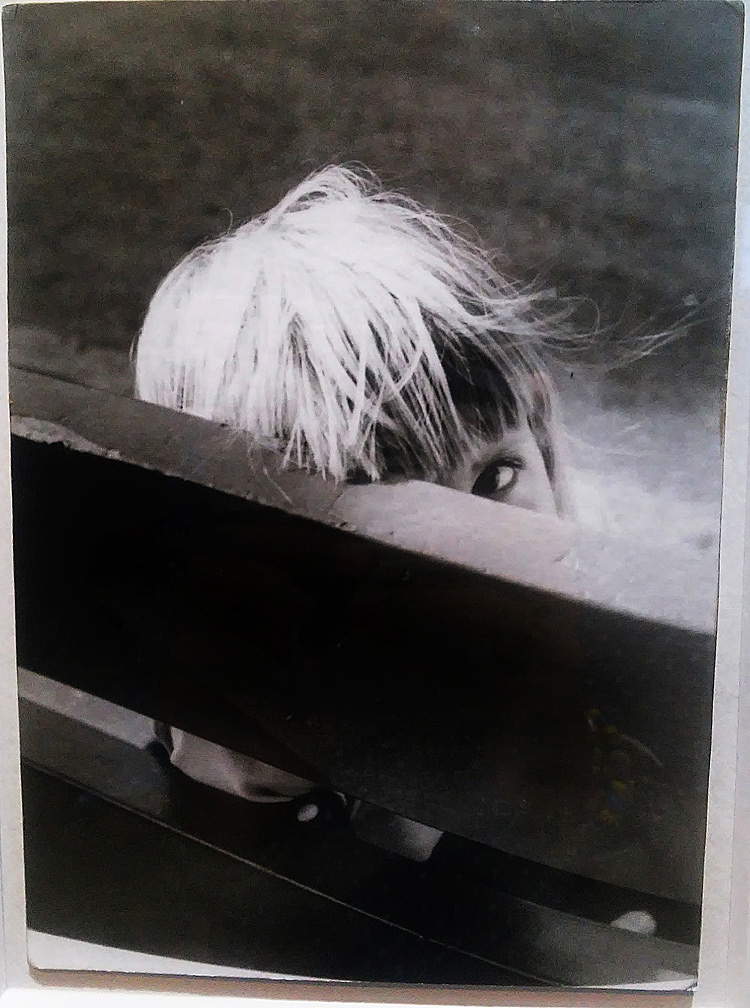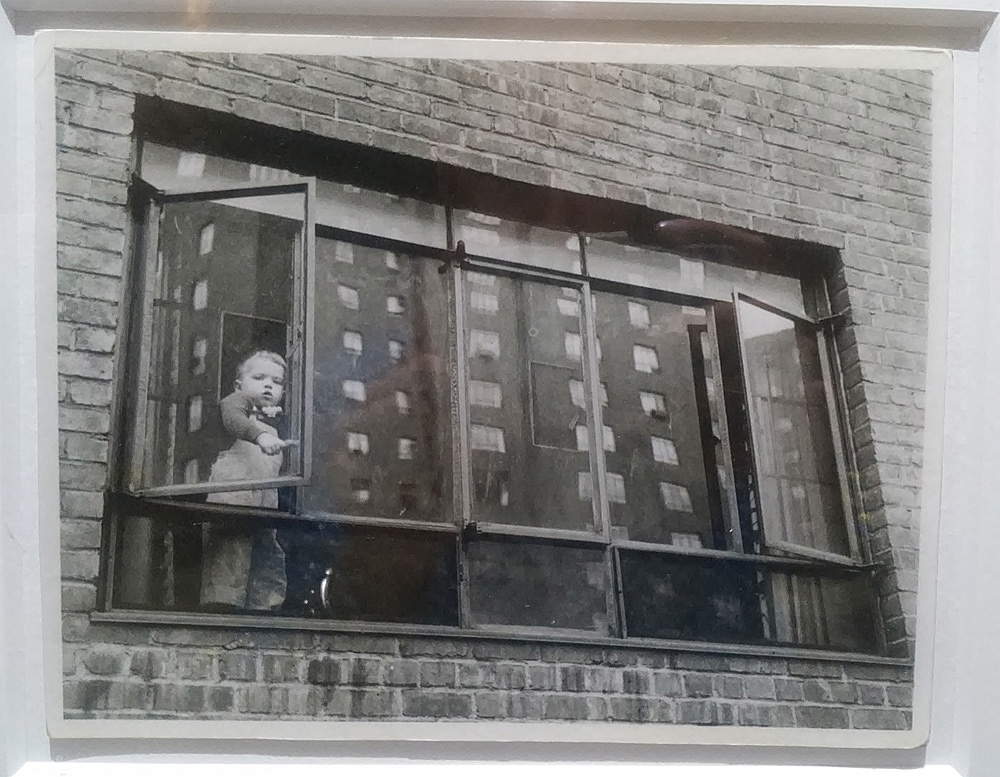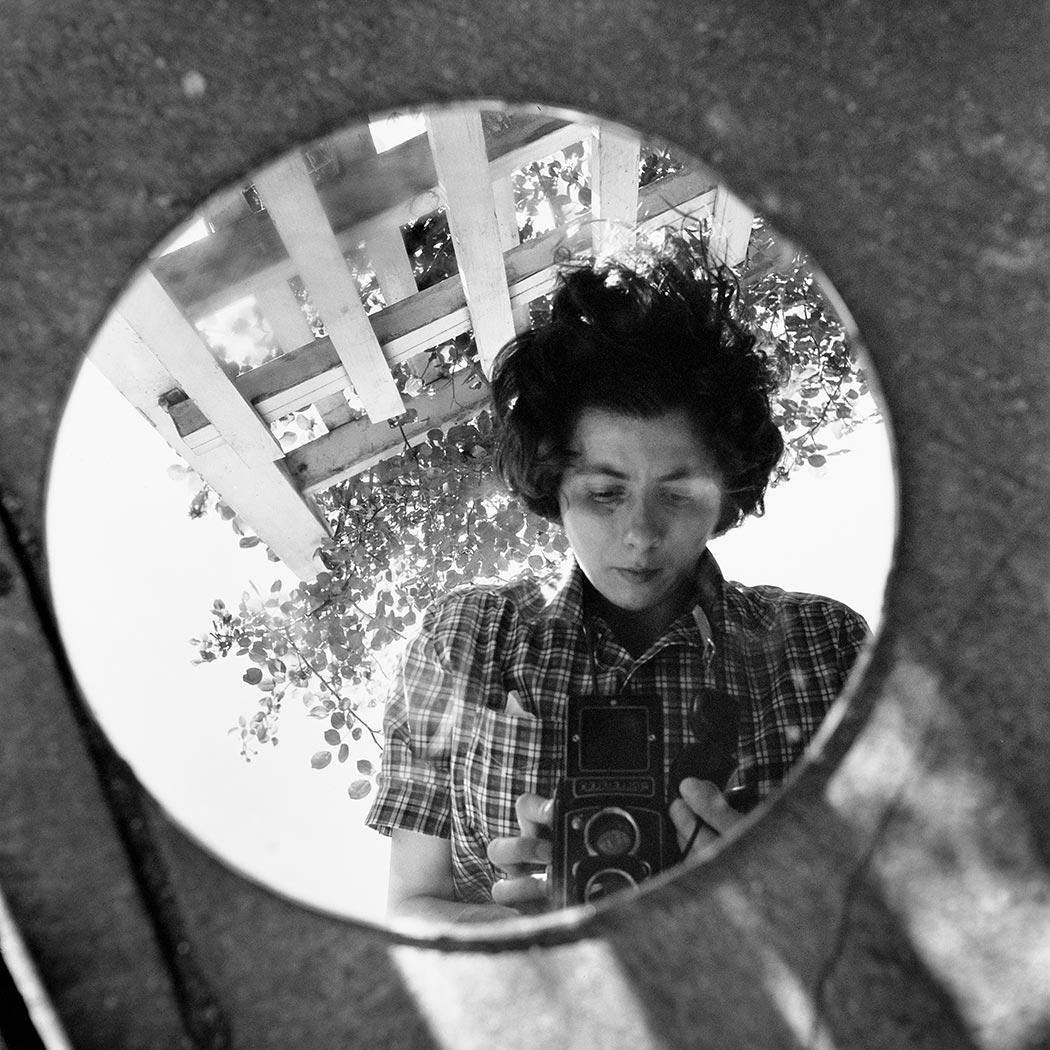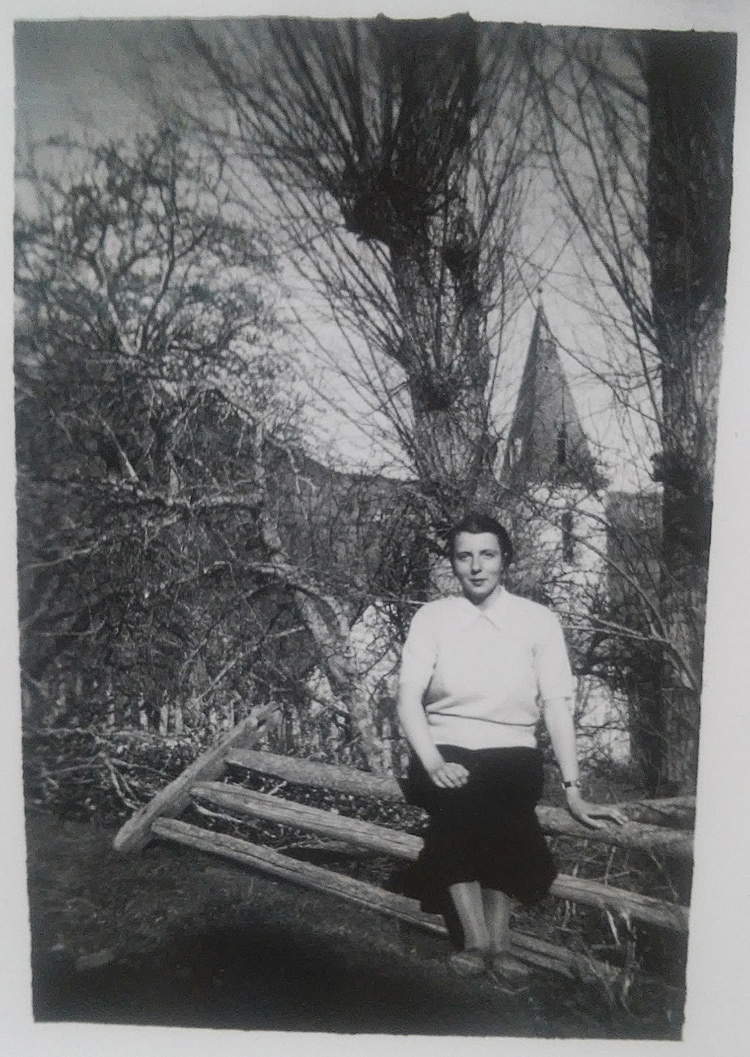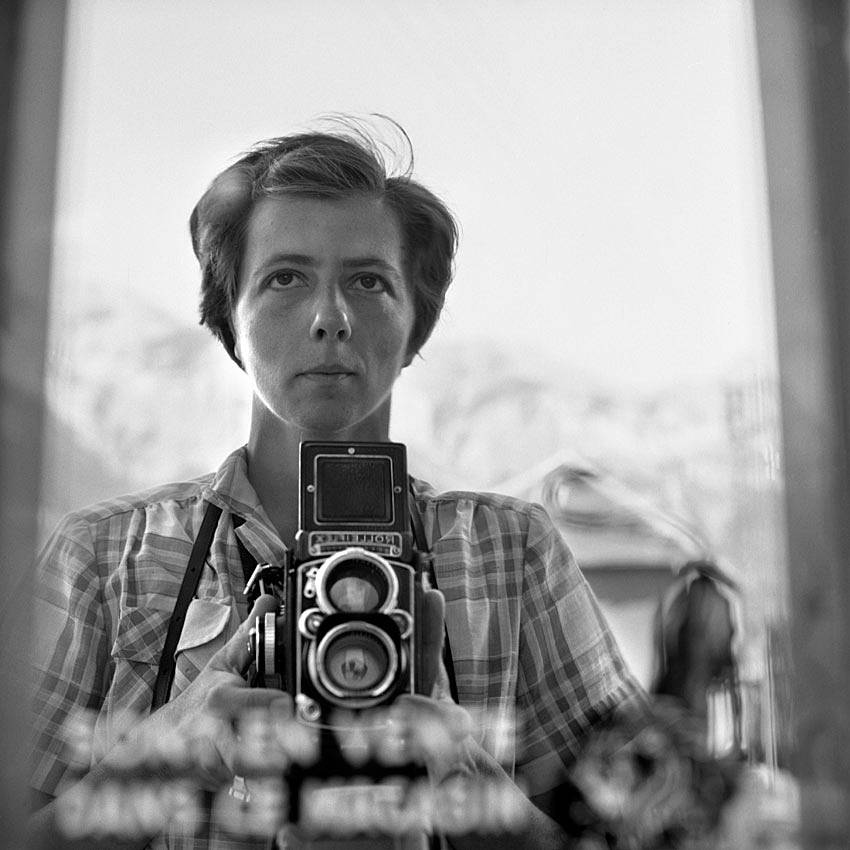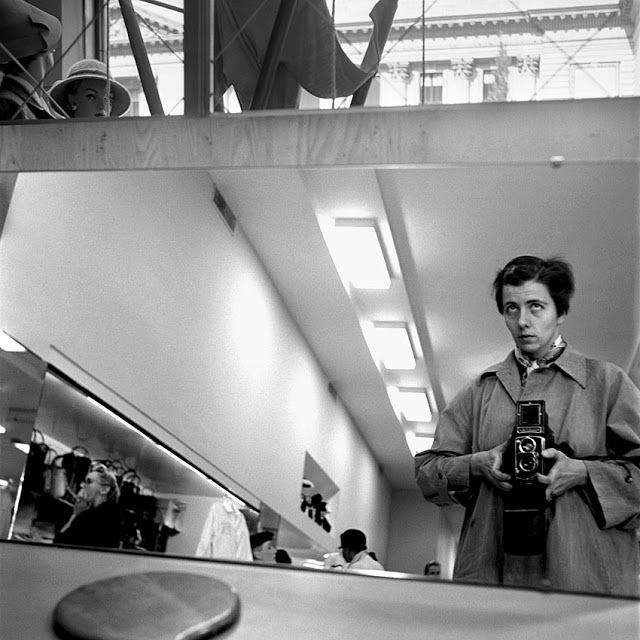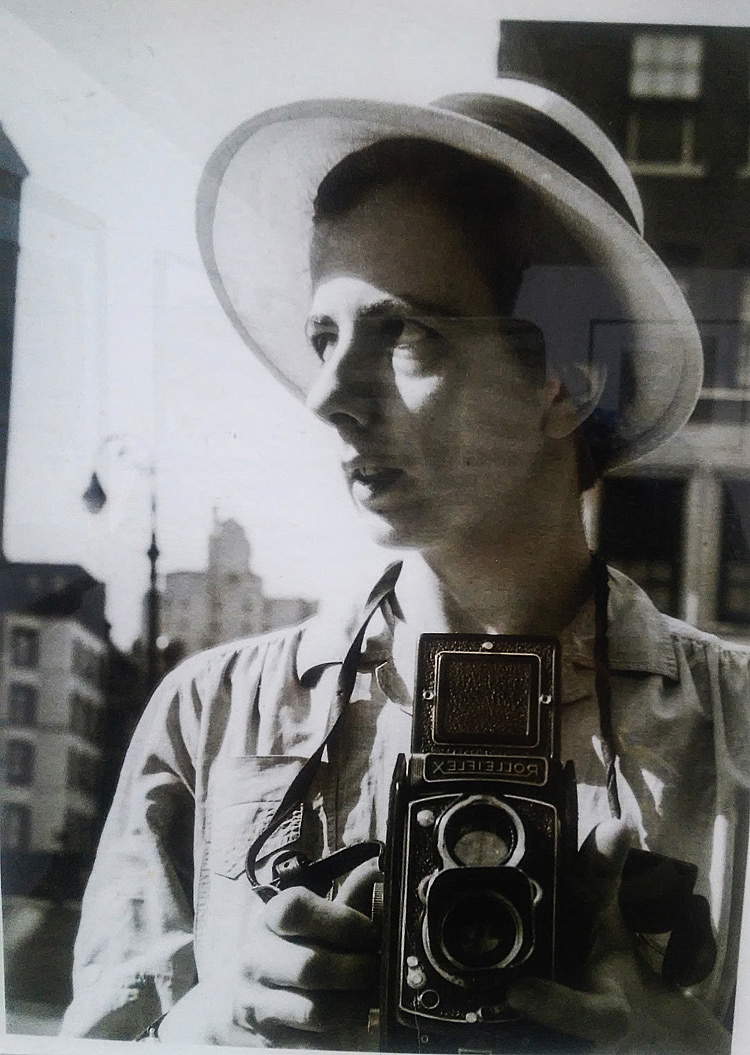by Ilaria Baratta , published on 07/09/2018
Categories: Exhibition reviews
/ Disclaimer
Review of the exhibition 'L'autre Vivian. The Other Vivian Maier,' at the Tower of the Castle of the Bishops of Luni in Castelnuovo Magra from June 1 to October 14, 2018
As has been customary for a few years now, the Tower of the Castle of the Bishops of Luni in Castelnuovo Magra is also reserving for its visitors an exhibition dedicated to photography for 2018: in fact, in 2015 the six-story tower hosted a photography exhibition that featured Elliott Erwitt ’s shots depicting dogs. Mostly black-and-white images that depicted man’s faithful friends in rather bizarre poses and situations. And at the same time as the exhibition, the municipality organized an interesting lectio magistralis, obviously on photography, with Steve McCurry, the famous contemporary photographer who portrayed, among others, the Afghan Girl. The latter was then the following year the protagonist of a new photographic exhibition inside the tower, entitled Football and Icons, in which McCurry presented soccer as a universal language, as a common denominator that unites all places in the world, since it is understandable to any person, regardless of the difference in language and culture. And on the occasion of his exhibition, the artist had returned to the village of Castelnuovo Magra to hold another meeting on the subject.
The year 2017 brought three exhibitions to the tower, which were also very interesting and non-trivial: from March until October there were exhibitions by Tano d’Amico, Mario Dondero, and Bruce Chatwin, in that order. The first, entitled Tano D’Amico. The Struggle of Women, presented to the public the Sicilian photographer’s shots dedicated to women and the battles they have fought throughout history for the conquest of rights and the improvement of their condition; the second, Homage to Prague, in the Footsteps of Utz, was a celebration of the 20th anniversary of the publication ofUtz, a historical novel set in Prague written by Bruce Chatwin. The latter was featured in the third exhibition that year, entitled Bruce Chatwin. The Journey Continues, in which a little-known aspect of the writer of In Patagonia was made known, namely that of a photographer: Chatwin loved to take photographs solely while traveling in order to create a kind of visual notebook, in which he jotted down the things that stuck with him the most. This year we continue the tradition of photographic exhibitions inside the narrow tower of Querciola Square with Vivian Maier (New York, 1926 - Chicago, 2009), the nanny photographer who became world famous only after her death.
Vivian’s story, still little known to most, intrigued Roberto Carlone (Vercelli, 1955), actor and musician, founder of the Osiris Band in 1980. His passion, as well as his curiosity to always know something new about a figure who has only recently begun to interest the general public, led him to devise an original show, which debuted in 2016 and has toured in Italy, France and Switzerland, in which various characters and different art forms, such as photography, videomapping and music, are intertwined, in addition, of course, to the theatrical narration entrusted to Carlone himself.
The show, titled The Eyes of Vivian Maier (I’m a camera) revolves entirely around the life of the nanny photographer and the discovery of her countless snapshots - more than 150,000 - by a 25-year-old boy, John Maloof. A show performed on a beautiful summer evening right under the Tower of the Castle of the Bishops of Luni, which at its conclusion enticed the writer to visit the exhibition of the same name curated by Roberto Carlone himself and Caterina Cavallari, open to the public until October 14, 2018 and highly recommended. Accompanying the exhibition is a publication also written by Carlone, entitled L’Autre Vivian. An Unpublished Journey into Vivian Maier’s France, which recounts through narratives, testimonies, interviews, imaginary dialogues and photographs, taken by the author himself, another Vivian Maier, much more intimate than the sensational case that exploded in 2009, presented to the world, as Carlone says, as “a sort of Mary Poppins.” A phenomenon that became commercial, which started from the chance discovery of John Maloof, the one who at the sum of four hundred dollars bought some of those many shots, which remained for years and years hidden inside boxes, which he subsequently printed, put online and sold (not only prints and negatives, but also the plastic reels of film) and which someone advised him not to disperse, but rather to divulge. Enthusiastic, Maloof became hooked and began the first research on that prolific photographer.
 |
| Poster for the exhibition L’autre Vivian in Castelnuovo Magra. |
 |
| Roberto Carlone |
But the show, exhibition and book conceived by Roberto Carlone intend to highlight the figure of Vivian Maier from the point of view of “a woman, who experienced firsthand a story of hardship and migration.” A photographer who throughout her existence always wanted to stay out of the world of commerce, as evidenced by her desire during her lifetime not to develop her shots (she printed only a few) but to keep them for herself, as a passion that had to remain in her view personal, to “have a secret to keep.” As we read in L’Autre Vivian, “Vivian is one of the first witnesses of a great moment: the documentation of the irreparable rupture between the merciless consumerist world and its victims, between the wild urbanization at the expense of the slower rhythms of nature and a simple life attentive to human development.” And again, “Photography is a private matter! The snapshot erects a barrier. It encloses in a room a moment that only I have seen. And there it ends. There it remains, in my secret treasure chest.” Very few shots were developed by her in the darkroom, a room kept locked so no one could enter, so no one would see her shots.
What is unusual is that she almost never printed, published or saw her photos, but those found are all technically perfect, precise, they are “successful photos” that allow one to perceive Vivian’s very great ability. With a single shot she was able to bring to life real portraits of ordinary stories, of ordinary people with whom she created a certain empathy: an extraordinary talent accompanied by a strong dose of sensitivity and humanity. In the interview with Alain Robert, one of the inhabitants of Champsaur, the region of France where Vivian spent six years of her childhood, from age six to twelve, and where she returned as an adult after the death of her aunt in 1950, we read that she had a humanist photographer’s approach, a human approach, also made possible by the type of instrument: possessing a Rolleiflex, which she always kept around her neck, she could shoot and at the same time interact with the subject, talk to people. And above all, thanks to that camera, he could get close: he would stand between 60 and 80 centimeters from the person he wished to portray and at the same time converse with them to get to know a little of their soul. Her goal was to preserve, to “collect in a casket the world,” to create an “endless monumental visual dictionary,” to “catalog people’s feelings, entering for a moment into the lives of others.” With her camera around her neck she traveled, she saw, she existed; she pushed herself to the limit. Without her she would have died. She herself was a camera. "I’m a camera."
On the occasion of the exhibition L’Autre Vivian, fifty black-and-white photographs follow one another inside the six floors of the Tower, which are not intended to be a simple photographic exhibition, but rather the story of an unknown Vivian: one who spent her happiest years in France, in the High Alps, in the home region of her mother, Maria Jaussaud. She, too, enjoyed taking photographs, so she had probably passed this passion on to her daughter, although Vivian considered herself self-taught. The great influence for photography, however, came to her from Jeanne Bertrand, among the first professional photographers to exhibit at MOMA. Her father, Carl von Maier, was a wretch who had abandoned the whole family: for this reason, Maria Jaussaud had returned to her roots, taking with her little Vivian, who was six years old at the time. Here she could be in the midst of nature, among woods, hedges, swamps and farmland, among that rural landscape that she began to depict from a young age in her shots.
 |
| A room at the L’autre Vivian exhibition in Castelnuovo Magra. Ph. Credit Municipality of Castelnuovo Magra |
 |
| A room of the exhibition L’autre Vivian in Castelnuovo Magra. Ph. Credit Finestre Sull’Arte |
The images in the exhibition come from a private collection and have never been exhibited in Italy, while others are the only existing originals, printed and autographed by Vivian herself. Among the latter are Homme avec trois agneaux dans les bras, St Bonnet entouré du bocage Champsaurin vu de la montagne de Moutet, Troupeau de moutons avec berger, original silver-printed photographs that together with contemporary prints introduce the visitor to the exhibition: this one opens with portraits and landscapes of that rural world mentioned above, so beloved by the nanny-photographer. Protagonists are therefore the bergers, the shepherds often depicted with their lambs or sheep, whether flocks or a few: tender and sweet are the images Homme avec trois agneaux dans les bras and Le berger, in which both young shepherds affectionately clasp lambs in their arms; in the first case three, showing loving-kindness between them (one lamb seems to be giving kisses to another). Other animals depicted are mules, accompanied by men in the middle of the meadows.
The view from the top of Saint-Bonnet, a village in Champsaur, also home toEntreprise Festa, a company that has been involved in construction for decades. A beautiful group photo is dedicated to the latter. Portraits of local people include the couple Augusta Blanchard and her brother Hubert, two villagers immortalized in front of a rural building. Worth mentioning is the portrait of Vivian Maier’s grandfather, also a shepherd, depicted here immersed in a vast meadow, clad in work clothes and a cap on his head, while clutching in his right hand the characteristic shepherd’s staff.
 |
| Vivian Maier, Homme avec trois agneaux dans les bras (s.d.; original photograph with silver print; Private collection) |
 |
| Vivian Maier, St. Bonnet entouré du bocage Chapsaurin vu de la montagne de Moutet (s.d.; original photograph with silver print; Private collection) |
 |
| Vivian Maier, Troupeau de moutons avec berger (1950; original photograph with silver print and Vivian Maier’s autograph annotation “End of may 1950”) |
 |
| Vivian Maier, L’homme et son mulet (s.d.; contemporary antiqued inkjet print; Private collection) |
 |
| Vivian Maier, Augusta Blanchard ép. Boyer dit “Carabi” et son frère Hubert (s.d.; contemporary antiqued inkjet print; Private collection) |
The exhibition continues with portraits of women: in La femme au miroir, a woman is depicted as she is looking in a mirror, in a sort of double portrait; in Vielle dame au chapeau de paille et à la faucille, an elderly woman in the foreground in the middle of the fields poses with a straw hat and a scythe in her hand. While these are contemporary prints, original and autographed are Femme au foulard, taken on March 6, 1951, depicting a middle-aged woman with a headscarf covering her head facing the lens, and Madelaine Reynier épicière à St Bonnet, also taken in March 1951, which depicts a young woman in a store (she wears a plaid apron) sitting while holding a black dog on her lap.
Another section is devoted to children portrayed in rural or urban settings: in the first is a little boy with suspenders, smiling toward the lens, in the original shot from the summer of 1950, and a pair of children, probably brothers, Roland and Alain Mazet, both in the foreground with a cap on their heads and a twig in their hands; in the city, in the United States, the three little boys posing embraced and proud to be photographed in the image Ils sont trois, ils se prêtent au jeu de la photographe (New York, 1952), and the little man looking out of a large window of a building in a sort of presentation to the public in L’appel du dehors - USA. Very original in the writer’s opinion is the photo titled L’enfant, where in the foreground a little girl with straight, light-colored hair and bangs hides behind a bench, letting only one eye facing the camera be seen: an unusual framing that results in an exceptionally charming result.
The exhibition concludes with a floor entirely devoted to Vivian Maier’s self-portraits taken in the most diverse places. The only original self-portrait in the exhibition depicts the photographer sitting on a wooden support in a kind of park; a tower-like construction can be glimpsed behind her. The shot is also the only one, among those present, in which Vivian does not appear in front of a mirror and with her camera in her hand: the photographer liked to take self-portraits in the mirror not out of vanity, but out of a search for identity, to “record a state of mind,” “to exist.” She depicts herself from a bottom-up perspective through a round mirror in Dans un miroir rond, in front of a store window in Dans une vitrine de Saint Bonnet and in Whole sale, in the mirror inside a store in Dans un magasin, while in USA she takes a photograph holding her Rolleiflex around her neck without looking toward the mirror and catching a glimpse behind her of the urban landscape around her, with tall windowed buildings and street lamps on the street.
L’Autre Vivian. TheOther Vivian Maier is recommended not only for those who love photography, but also for those who wish to discover the figure of a 20th-century woman who throughout her existence, thanks to a strong human and artistic sensibility, cultivated her passion solely for herself, staying outside the box of business. A passion that allowed her to feel alive told in an unprecedented journey among her lesser-known shots.
 |
| Vivian Maier, Femme au foulard (1951; original photograph with silver print and autograph annotation by Vivian Maier “March 6th 1951 (tucs) Agathe Nicolas Le Domaine”; Private collection) |
 |
| Vivian Maier, Ils sont trois, il se prêtent au jeau de la photographe (1952; contemporary antiqued inkjet print; Private collection) |
 |
| Vivian Maier, L’enfant (s.d.; contemporary antiqued inkjet print; Private collection) |
 |
| Vivian Maier, L’appel du dehors (s.d.; contemporary antiqued inkjet print; Private collection) |
 |
| Vivian Maier, Self-Portrait “Dans un miroir rond” (s.d.; contemporary antiqued inkjet print; Private collection) |
 |
| Vivian Maier, Self-Portrait (s.d.; original photograph with silver print; Private collection) |
 |
| Vivian Maier, Self-Portrait “Dans une vitrine de Saint Bonnet” (s.d.; contemporary antiqued inkjet print; Private collection) |
 |
| Vivian Maier, Self-Portrait “Dans un magasin” (s.d.; contemporary antiqued inkjet print; Private collection) |
 |
| Vivian Maier, Self-portrait “Whole salt” (qtd.; contemporary antiqued inkjet print; Private collection) |
 |
| Vivian Maier, Self-portrait “USA” (q.d.; contemporary antiqued inkjet print; Private collection) |
Warning: the translation into English of the original Italian article was created using automatic tools.
We undertake to review all articles, but we do not guarantee the total absence of inaccuracies in the translation due to the program. You can
find the original by clicking on the ITA button. If you find any mistake,please contact us.
